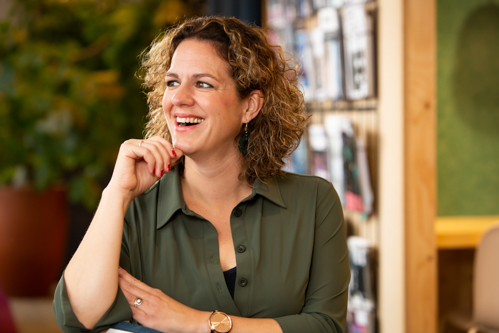Get the most out of arts education
Why arts integration? For Sean Layne, director of Focus 5, Inc., this is not a question at all. Of course arts integration! is his motto. For more than thirty years he is advocating the merits of arts integration into the school curriculum. The center offers workshops, courses and tutorials and helps schools to implement this concept.
Cooperation
But what is arts integration? Layne gives us a first impression by presenting three ways you can find of arts education at schools. The first is arts education as part of the curriculum, for example drama or music lessons. These lessons are given by specialists. ‘This is arts for art’s sake’, as Layne puts it.
The second is an arts enhanced curriculum. In this case art is used as a means in different subject: the classroom teacher asks the students to sing a song regarding the letters of the alphabet or draw a picture about a story they have heard.
The third is an arts integrated curriculum: specialist and classroom teachers are working side by side. Their cooperation leads to more efficient and engaging ways of teaching. Layne is the first to say that all three types are necessary: ‘The three form a healthy eco-system in the school. For example: the specialist inspires other teachers to engage in arts and arts integration learns specialists more about arts theory. So we inspire schools to come to a healthy balance.’ Together they give arts a solid position in schools.
An extra argument for arts integration are the insights from the neuro- and educational sciences: collaborative learning, working with real problems and creating things (in stead of purely memorizing) lead to deeper and longlasting learning.
Dancing with clouds
Dancer and teacher Harlan Brownlee gives us another good reason for arts integration: it engages and activates students. He offers us a very convincing proof of this by demonstrating an arts integrated lesson. We are about to learn about clouds by dancing. And it turns out this also works fine online.
After a warming up the participants of the LKCAtelier are dancing cirrus clouds by waving arms high in the air, cumulus clouds by puffing up their bodies and the low stratus clouds by crouching and making long lines. Brownlee is leading them with a simple tambourine: one, two, three… eight and hold, one, two… eight and move.
And after the three kinds of clouds we learn about warm fronts and the accompanying specific order of clouds. And are invited to design our own choreographies of warm fronts in groups of three. The message is clear: by performing and creating arts students will internalize knowledge deeper. Who will ever forget about cirrus clouds after dancing them?
Brownlee uses material from school textbooks. So his lessons replace a part of the regular lessons in the teaching material. That’s why close cooperation with the classroom teacher is absolutely necessary. And of course this is possible with any kind of arts discpline, depending on the subject area. You can also use art for general school concerns such as class management or a safe learning environment. Brownlee: ‘Just think about how arts can help to reinforce your lessons.’
A definition
Together with his colleague Lynne Silverstein Sean Layne developed for the Kennedy Center a definition of arts integration. The result was a somewhat complex, but mainly rich description of the key elements:
Arts integartion is an approach to teaching in which students construct and demonstrate understanding through an art form. Students engage in a creative process which connects an art form and another subject area and meets evolving objectives in both.
Arts integration, Layne explains, ‘is not an activity, but is an holistic approach and has to do with qualities of teaching’. And those qualities are rooted in constructivism, with elements like problemsolving, collaborative learning and student-centeredness. This approach effectuates deeper learning. Not by chance creating is in the top of Bloom’s revised taxonomy on learning. For this reason engagement in a creative process is crucial: students are not just simply moving, singing or drawing, but are really creating something original. Layne shows a model of the creative process, at first sight a very chaotic model with lines and arrows everywhere. But it’s exactly this what makes out the strength of a creative process: ‘You can start it anywhere and enter it from different angles.’
Noteworthy is the last element of the definition: in arts integration arts is not purely a goal or purely means, but they are both in one. Not only the skills in say maths or reading evolve, but AI-lessons also deepen the understanding of the arts form. And in this way it offers us the best of both worlds.
More inspiration

Reageer (je reactie verschijnt na goedkeuring, vanwege spam)